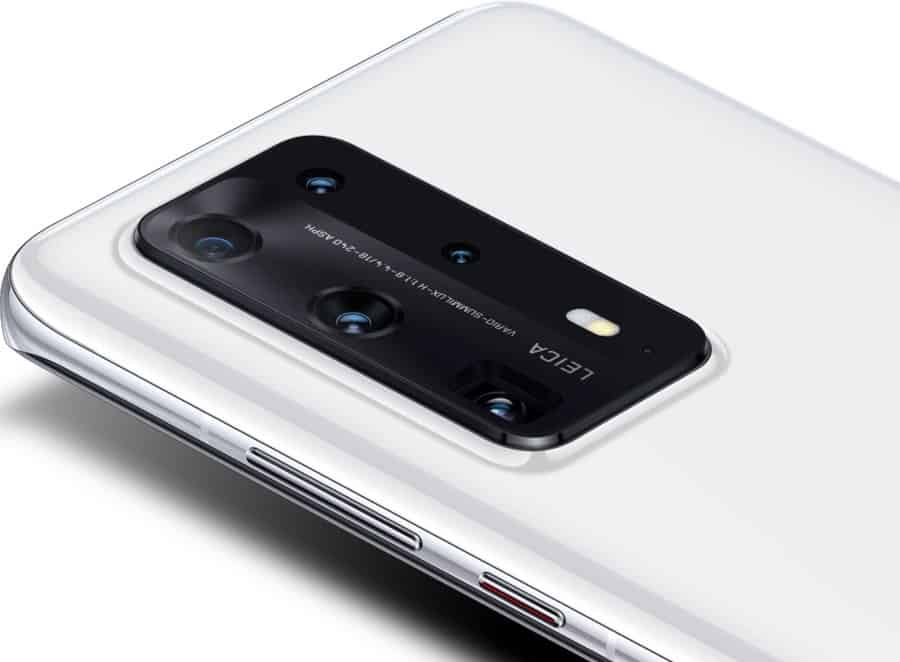
Above: The five camera array in Huawei’s P40 Pro+. Photo courtesy Huawei.
Originally published in NewsdayTT on March 26, 2020.
Huawei, the Chinese company that’s been engaged in running legal battles with the US government, launched its P40 line of smartphones on Thursday morning.
Richard Yu, CEO of Huawei’s Business Group took the stage in Munich to announce the devices. He was the only presenter. Cameras did not cut to any views of the audience and the light applause that accompanied Yu’s announcements suggested a limited group, despite the spacious staging.
The legal problems the company has experienced in the US go beyond limits on the sale of its devices that have effectively removed recent versions of its phones from store shelves there.
Being placed on the US entity list meant that its business partners have been banned from providing the company with technology, including software, that are part of smartphone construction and support infrastructure.
Huawei has been granted successive 90-day extensions of a deadline for the full implementation of that ban and the most recent extension was cut by half to 45 days.
The hardware manufacturer has been working to create alternative sources for the chipsets that go into its devices, but until this week, it had no decisive response to the limitations that the ban places on Google, developer of the Android operating system that runs all non-Apple smartphones today.
The company has an alternative, the open-source version of Android, but that software does not have the usual apps or the intricate web of co-dependencies that are built into Google’s commercial version of the product. It also tends to be updated less frequently.
As a result, Huawei’s last splashy introduction of a smartphone locally was the P10 series. The subsequent P20 and P30 series devices received far less market push in the Caribbean in the wake of customer confusion following the US ban.
Those were the last Huawei smartphones to ship with Android 9 with an option to upgrade to version 10.
HuaweiTT’s Sales and Marketing Manager, Consumer Business Jason Ifill said that the budget P30 Lite, “sold very well and continues to do so as it offers superior spec memory and camera to other mid-tier devices.”
He described the P30 and P30 Pro devices as “niche, high-end devices.”
In 2020, working within the limits of open-source Android, Huawei announced wider distribution of its App Gallery, a software resource it developed for its Chinese users.
The company is also introducing its own apps for video conferencing, the cheeky Mee Time, video and music playback, reading e-books, accessing the cloud and using phone based payment services.
According to Ifill, the company plans to launch the devices in Trinidad and Tobago in the next quarter, after shipping and manufacturing return to a more normal state.
“This is a significant launch, it’s the first flagship launch with the alternate app store ready and top apps available for install easily without using Google,” he said.
Yu called on developers to support the new app distribution system on the P40 devices.
The trio of new phones will be available from April 07, for the P40 (EU799) and P40 Pro (EU999) and in June for the P40 Pro+ (EU1,399).
The new devices ship with an improved camera system, including an expanded version of the periscope telephoto system that Huawei introduced with the P30 line. The P40 offers a triple camera system, the P40 Pro has a quad-camera system and the P40 Pro+ introduces a penta camera array, bringing a camera bag’s of five discrete lenses to a pocketable device.
How the new App Gallery works.
I downloaded the new version of the App Gallery to a Huawei Mate9 device.
Many apps available in the App Gallery are developed for an audience based in China, but there is a good selection of software in English.
Popular apps like Facebook and Instagram are ‘sideloaded’ into the device using either installers or links on the App Gallery. The Facebook entry takes you to a page on the company’s website where you can download the app directly as an APK file.
On official releases of Google’s Android this triggers a security warning and requires users to turn off an intrusion protection setting that allows the installation of software that isn’t from a known app store.
It’s unclear whether this will happen on the open source version of Android that Huawei has adapted for use on its new P40 devices.




